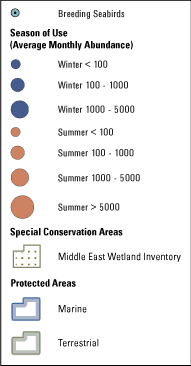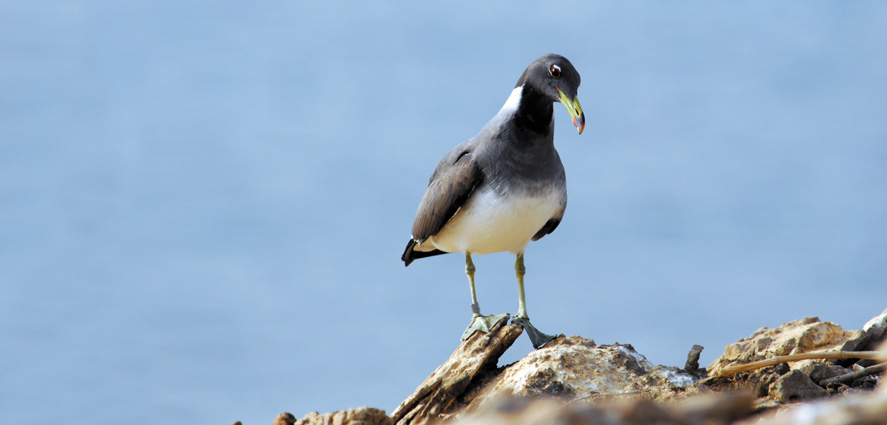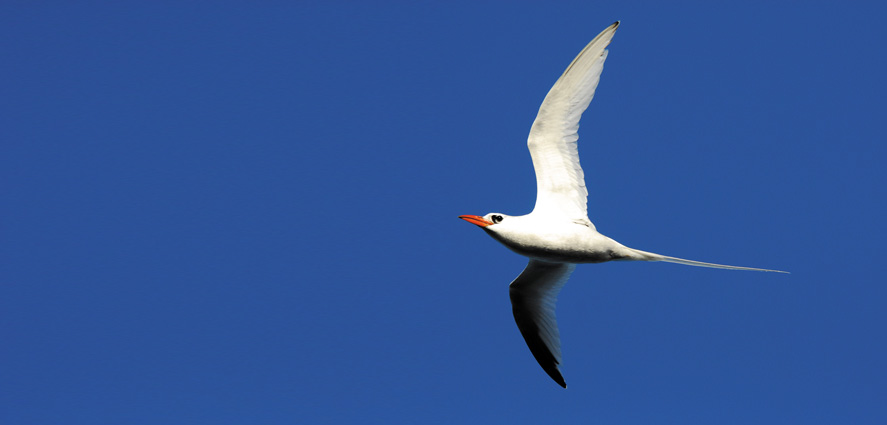
You are in :
Sea to Summit
Select a map
Bird Habitats: Important Avian Areas



The numerous offshore islands and extensive coastline of Abu Dhabi Emirate provide diverse habitats to birds, particularly wintering shorebirds that use food-rich intertidal areas as feeding grounds. There are vital hotspots in the Emirate for bird conservation known as Important Bird Areas (IBAs) identified by BirdLife International (BLI), a global bird conservation organisation. IBAs are selected following objective criteria including one per cent of the biogeographical population, 20,000 or more waterfowl, or based on the regular presence of a globally threatened species. Nine BLI IBAs and an additional five identified by EAD are located in the Emirate.
Abu Dhabi also supports a number of important wetlands identified by the Middle East Wetland Inventory (MEWI) as significant not only to birds but a host of other species. Although many of these important conservation areas (IBAs, MEWI) are recognised globally, this does not guarantee protection unless local action is taken. Local conservation planning is the essential next step to ensuring long-term protection of these areas and the bird life they support.

Sooty Gull
The Sooty Gull (Larus hemprichii), listed as a regional priority species, is exclusively an island-breeding species endemic to the north-west Indian Ocean, including the Arabian Gulf. Qarnein Island, with an estimated 2% of the world's breeding population, has the larger of the 2 breeding colonies in the Emirate. The other colony is located on Dayyinah Island.

Red-billed Tropicbird
The Red-billed Tropicbird (Phaeton aethereus) breeds during the winter months at 3 known breeding sites in the UAE: Qarnein, Zirku and, occasionally, Arzanah. Qarnein is the largest and most important breeding site. The estimated 200 breeding pairs in Abu Dhabi represent nearly 2–3% of the entire world breeding numbers and roughly 13% of the Middle East breeding population of indicus subspecies.

















